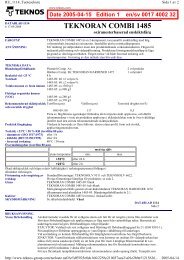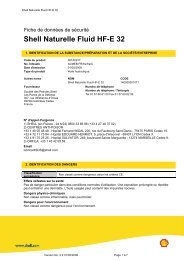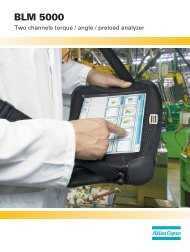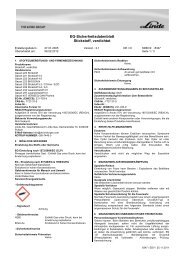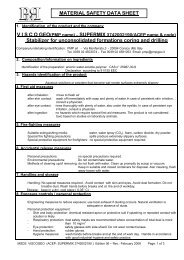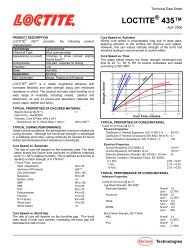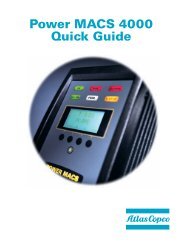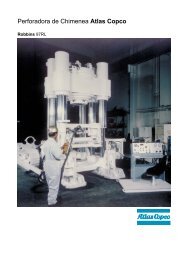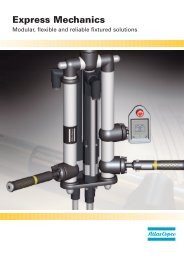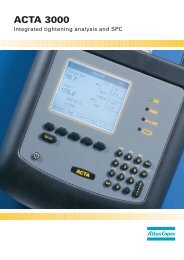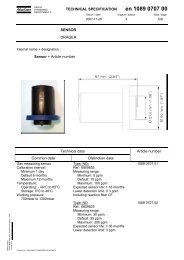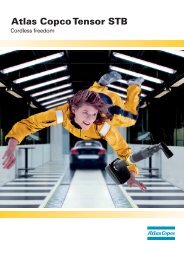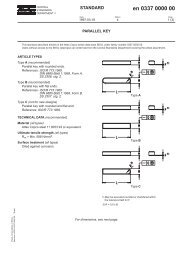Ergonomics - Atlas Copco
Ergonomics - Atlas Copco
Ergonomics - Atlas Copco
You also want an ePaper? Increase the reach of your titles
YUMPU automatically turns print PDFs into web optimized ePapers that Google loves.
Percussive tools<br />
Percussive tools use the blow energy<br />
from an accelerated piston to create high<br />
forces. The high forces can be used to<br />
chip off steel or to set a rivet. Using the<br />
tool may, however, involve risk of injury<br />
from noise and vibration.<br />
Vibration controlled riveting hammers<br />
and bucking bars are frequently used in<br />
the aerospace industry.<br />
Where are the tools used?<br />
There are three different types of percussive<br />
tools: chipping hammers, scalers, and rivet-<br />
ing hammers. The first two are commonly<br />
used in foundries, while the riveting hammer<br />
is mainly used in the aerospace industry.<br />
Since percussive tools are very effective they<br />
are commonly used for a variety of other<br />
applications, from the worker assembling<br />
guide pins in engine blocks to the sculptor<br />
chipping away at raw material in his studio.<br />
Working environment<br />
High noise levels are a typical problem with<br />
percussive tools. The machine noise can be<br />
muffled, but noise from the main source, the<br />
process, is difficult to reduce in a way that<br />
is physically acceptable to the operators.<br />
Vibration values are also high for per-<br />
cussive tools, in particular from the inserted<br />
tool. There is a general rule that the chisel<br />
in a chipping hammer, for example, should<br />
not be touched when the tool is being<br />
operated. Easy to say, but difficult in<br />
41



